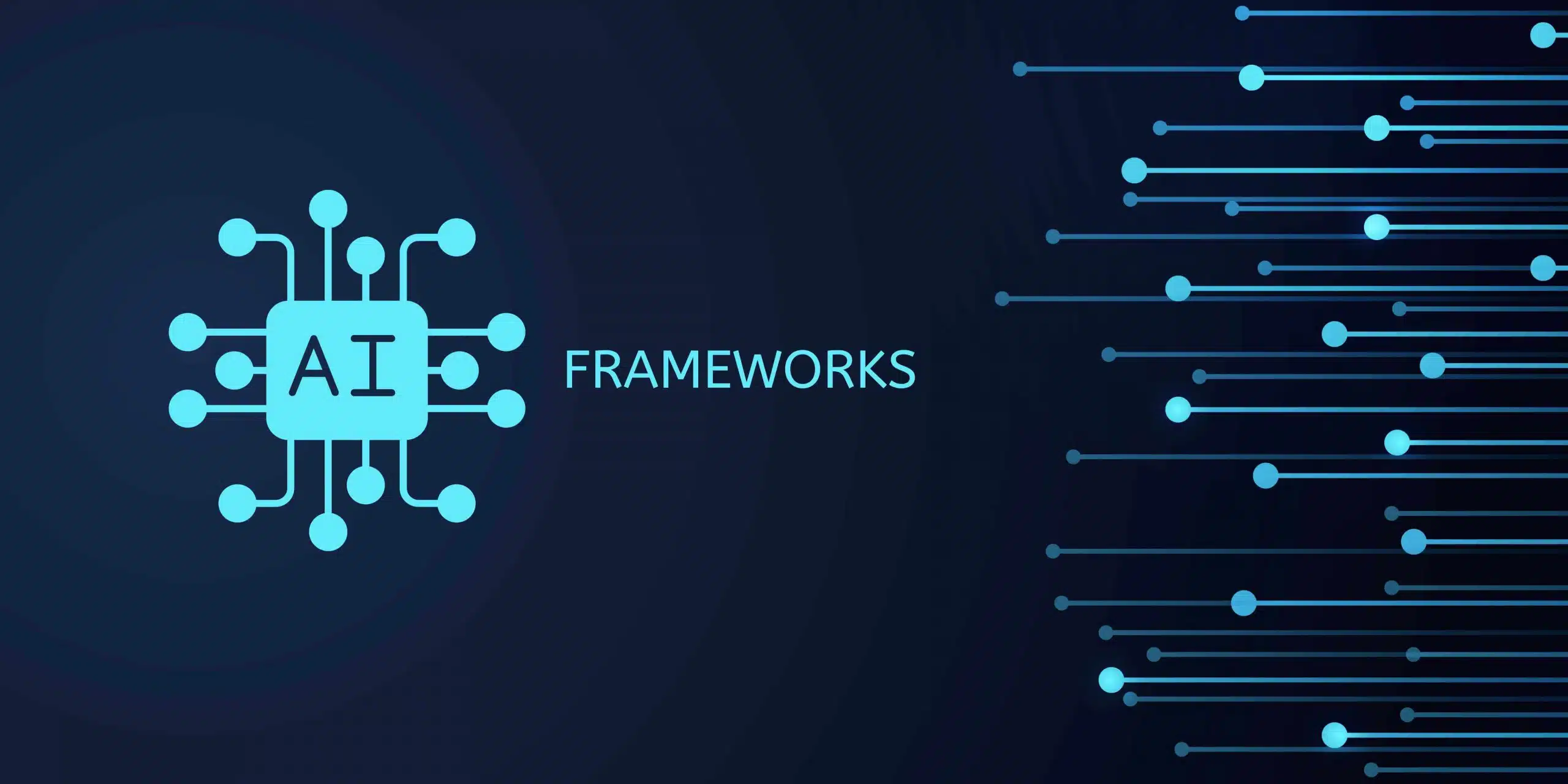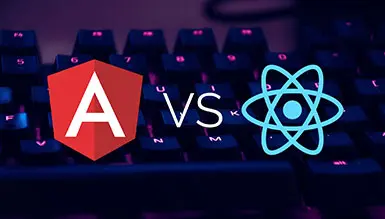Artificial Intelligence (AI) has revolutionized various industries with its ability to automate tasks and analyze vast amounts of data. However, building intelligent applications requires robust tools and frameworks that provide developers with the necessary tools and libraries to implement AI algorithms effectively. In this article, we will explore the top AI frameworks for 2024 that are poised to shape the landscape of intelligent applications. These frameworks offer a wide range of features, flexibility, and scalability to empower developers in creating advanced AI solutions.
Overview of AI frameworks
AI frameworks provide developers with a structured and efficient way to create and deploy artificial intelligence models. These frameworks offer a set of pre-built tools, libraries, and APIs that help streamline the development process, saving time and effort. By abstracting complex AI concepts and algorithms, frameworks make it easier for developers to experiment with different models, improve performance, and fine-tune the parameters of their AI systems.
Furthermore, AI frameworks also facilitate collaboration among developers by providing a common platform and standardized coding practices. The purpose of AI frameworks is to accelerate the adoption and advancement of artificial intelligence by empowering developers to build innovative and powerful AI applications.
Role of AI frameworks in developing AI applications?
AI frameworks play a crucial role in the development of AI applications by providing a structured platform for building, training, and deploying models. These frameworks, such as TensorFlow, PyTorch, and Caffe, offer libraries and tools that simplify the complex processes involved in AI development, including data preprocessing, model creation, and optimization. By providing pre-built algorithms and high-level APIs, AI frameworks enable developers to focus on the task at hand instead of dealing with low-level details.
Additionally, these frameworks support distributed computing and parallel processing, making it easier to train models on large datasets and accelerate the inference process. Overall, the role of AI frameworks is indispensable in the efficient and effective development of AI applications, allowing developers to bring innovative and intelligent solutions to various domains.
What are the benefits of using AI frameworks for building intelligent applications?
Frameworks play a vital role in developing intelligent apps by providing developers with a structured and organized approach to building applications. One of the key benefits of frameworks is their ability to streamline the development process. Frameworks come with pre-built code libraries, tools, and templates that allow developers to develop intelligent apps quickly and efficiently. This saves developers time and effort, as they do not have to begin from nothing and can focus on developing the unique features and functionalities of the app.
Another significant advantage of using frameworks in developing intelligent apps is the increased scalability they offer. Frameworks enable developers to build apps that can handle substantial amounts of data and can be easily scaled up or down depending on the demand. This is particularly important for intelligent apps, which often require sophisticated algorithms and models to process and analyze data. Frameworks provide developers with the necessary tools and infrastructure to handle complex tasks, making it easier to develop robust and scalable intelligent apps.
Furthermore, frameworks also contribute to the overall quality and reliability of intelligent apps. By following the guidelines and best practices provided by the framework, developers can ensure that their apps are well-structured, maintainable, and secure. Frameworks often come with built-in testing and debugging tools, which help developers identify and fix issues early in the development process. This not only improves the efficiency of development but also leads to higher-quality apps that are less prone to errors and vulnerabilities.
Factors to Consider when Selecting an AI Framework
When selecting an AI framework, there are several key factors to consider.
Firstly, compatibility is key. It is essential to ensure that the framework you choose is compatible with your current infrastructure and technology stack. This includes checking if it supports the programming languages you are proficient in, as well as examining if it can integrate seamlessly with any existing tools or platforms you are already utilizing. The compatibility factor is crucial as it guarantees a smoother transition and minimizes any potential complications or setbacks during implementation.
Secondly, scalability and performance should be carefully evaluated. AI frameworks vary in terms of their scalability and how efficiently they can handle enormous amounts of data and complex models. Understanding the size of your data and the complexity of the tasks you want your AI system to perform is essential for selecting a framework that can handle the workload effectively.
Furthermore, assessing the performance benchmarks of different AI frameworks, especially in terms of training and inference speed, is crucial as it directly impacts the system’s responsiveness and real-time decision-making capabilities. Taking the time to thoroughly consider the scalability and performance of different AI frameworks can help ensure the long-term success and effectiveness of your AI implementation.
Top 10 AI Frameworks for 2024
1. Tensorflow
TensorFlow, a powerful AI framework developed by Google, offers a range of key features and capabilities that make it highly efficient and widely used in machine learning applications. One of its prominent features is its flexibility, allowing developers to build and deploy machine learning models across various platforms, from mobile devices to large-scale distributed systems. With TensorFlow, users can construct complex neural networks, leveraging its dedicated support for deep learning algorithms.
Its ability to handle large datasets efficiently, thanks to its distributed computing capabilities, further enhances its appeal. Additionally, TensorFlow provides an extensive library of prebuilt functions and models, simplifying the development process and empowering users to experiment with novel architectures. With its comprehensive ecosystem and support for multiple programming languages, TensorFlow proves to be an indispensable tool for AI researchers and developers.
Pros
- Highly Scalable
- Better computational graph visualizations
- Better Library Management
- Excellent community support
Cons
- Missing Symbolic loops
- No support for OpenCL
Use Cases
- Speech recognition.
- Image recognition.
- Object tagging videos.
- Self-driving cars.
- Sentiment analysis
2. Scikit-learn
Scikit-learn is a popular open-source AI framework that possesses several key features and capabilities. Firstly, it provides a wide variety of machine learning algorithms for classification, regression, clustering, and dimensionality reduction tasks. These algorithms are implemented efficiently, making them suitable for handling substantial amounts of data.
Additionally, Scikit-learn offers robust pre-processing capabilities, including data scaling, encoding categorical variables, and handling missing values. It also supports various model evaluation techniques, such as cross-validation and metrics for measuring performance. Furthermore, Scikit-learn integrates seamlessly with other Python libraries, making it a flexible tool for building end-to-end machine-learning pipelines. Overall, Scikit-Learn’s extensive set of functionalities make it a highly versatile framework for developing AI solutions.
Pros
- Versatile
- Easy to use
- Open source
- Comes in many different ML (Machine Learning) algorithms
Cons
- No support for GPU computing
- Runs slow for large datasets.
Use Cases
- Spam email detection
- Sentiment analysis
- Image classification
3. Caffe
Caffe AI framework is a popular deep learning library that comes with a range of key features and capabilities. Firstly, it offers a flexible and efficient computation model, allowing users to define and train convolutional neural networks (CNNs) and other deep learning architectures with ease.
Moreover, Caffe offers seamless integration with other software tools and deep learning libraries, making it versatile for various research and production purposes. With its user-friendly interface and extensive documentation, Caffe proves to be an invaluable tool for deep learning practitioners, promoting quick development and deployment of AI models.
Pros
- Fastest convolutional network implementations
- Ease of use and Fast
Cons
- Less flexible
- Less commercial and Community support.
Use-Cases
- computer vision and multimedia
- large-scale industrial applications in natural language processing
- scientific research projects
4. Keras
Keras, being a powerful AI framework, encompasses several key features and capabilities that make it a preferred choice among researchers and developers. Firstly, it provides a user-friendly interface, allowing easy and efficient development of deep learning models. Additionally, Keras is built on top of TensorFlow, ensuring seamless integration with this powerful backend.
Keras offers support for both convolutional and recurrent neural networks, making it suitable for a wide array of applications. Moreover, it incorporates various advanced functionalities such as GPU support, distributed training, and model deployment, ensuring high performance and scalability. Overall, Keras is a comprehensive and robust framework that empowers developers to build and deploy state-of-the-art AI models with ease and efficiency.
Pros
- It makes it easy to turn models into products
- Quality Documentation
- Large Community Support
- Strong multi-GPU & distributed training support
- User-Friendly and Fast Deployment
Cons
- More computation times
- Use Case
- Creating deep models
5. MxNet
MxNet is an advanced AI framework that offers a range of key features and capabilities essential for modern machine learning tasks. Firstly, MxNet provides a flexible and efficient programming model that supports both imperative and symbolic programming paradigms, allowing developers to easily express complex deep learning models and algorithms.
Additionally, MxNet offers distributed training capabilities, enabling users to scale up their computations across multiple GPUs or even distributed systems. Furthermore, MxNet boasts extensive support for various programming languages, making it accessible to a wide range of developers. With its optimized computation engine, MxNet delivers high-performance deep learning, while its automatic differentiation feature simplifies the process of dealing with gradients.
Overall, MxNet stands out as a powerful and versatile AI framework with a comprehensive set of features that empower developers to build and deploy innovative machine learning models.
Pros
- Multi-language support
- Lightweight
- Flexible
Cons
- A small community of members
- Lesser community updates
Use Cases
- Train and deploy deep neural networks.
6. Pytorch
PyTorch is a popular open-source machine learning framework that offers several key features and capabilities for artificial intelligence applications. Firstly, it provides dynamic computation graphs, which allow for flexible and efficient processing of complex and dynamic neural networks. Additionally, PyTorch provides a seamless integration with Python, making it easy to write and debug AI models.
Moreover, PyTorch offers a highly user-friendly interface and comprehensive documentation, enabling researchers and developers to employ advanced techniques like deep learning and natural language processing effortlessly. Overall, PyTorch key features and capabilities make it an exceptional tool for building AI models and accelerating research and development in the field.
Pros
- Fast
- Provides dynamic graphs
- Developer’s friendly
- Easy computation
Cons
- Not suitable to train less data
- Lack of visualization support
Use cases
- Object detection
- Generative application
- Image classification
Pros
- Exceptional flexibility
- User-friendly interface
7. Accord.NET
Accord.NET is an advanced AI framework that comes next in top AI tools and frameworks. One of its primary strengths is the extensive set of machine learning algorithms it provides, ranging from traditional techniques like Naive Bayes and decision trees to more advanced methods such as support vector machines and deep learning. Moreover, Accord.NET offers a wide range of data processing tools, enabling developers to efficiently handle and preprocess their data.
Additionally, it boasts computationally efficient implementations, making it suitable for large-scale applications. The framework also supports computer vision, allowing integration with OpenCV for image and video processing tasks. Overall, the key features and capabilities of Accord.NET make it for various applications, empowering developers to build intelligent systems with ease and efficiency.
Pros
- Suitable for large-scale applications
- Support for signal and sound processing
- Powerful and versatile AI framework
8. FastAI
FastAI is a powerful deep-learning framework that possesses various key features and capabilities. Firstly, it provides a high-level API that enables users with limited coding experience to easily build and train complex neural networks. This framework also incorporates the latest advancements in transfer learning, allowing users to leverage pre-trained models and adapt them to their specific use cases.
Lastly, FastAI supports distributed and mixed-precision training, optimizing the efficiency and scalability of deep learning tasks. Overall, FastAI empowers both researchers and practitioners to quickly develop high-performing deep learning models by providing a robust and user-friendly framework.
Pros
- Offers intuitive data augmentation
- Data loading functionalities
Use Cases
- Image classification
- Object detection
- Text analysis
9. Theano
Theano is a Python library that enables efficient computation and manipulation of mathematical expressions, especially those related to deep learning models. Developed by the LISA Lab at the University of Montreal, Theano works by optimizing computations through symbolic graph manipulation, which allows for automatic differentiation and simplification of expressions.
The framework provides a high-level interface that allows users to define and evaluate mathematical expressions efficiently, making it a powerful tool for building and training deep learning models. Additionally, Theano can run computations on both CPUs and GPUs, further enhancing its flexibility and performance. Theano simplifies the implementation and optimization of complex neural network architectures, making it an asset in deep learning.
Pros
- Has the ability to efficiently utilize GPUs
- Faster computation and training of complex neural networks.
- It provides a high-level programming environment.
Cons
- Complicated installation process
- Lacks a built-in auto-differentiation feature.
Use Cases
- Image recognition
- Object detection
- Image segmentation
- Image classification
10. TensorRT
TensorRT is an artificial intelligence framework designed by NVIDIA that optimizes and accelerates deep learning inference for production deployment. It utilizes advanced techniques such as precision calibration, tensor fusion, and layer fusion to deliver maximum performance and efficiency across various platforms including GPUs.
TensorRT optimizes trained models, reducing their size and computation time, while maintaining high accuracy. With its ability to efficiently process deep neural networks, TensorRT empowers developers to deploy AI applications that can deliver real-time inferencing with low latency, making it an essential tool for industries such as autonomous vehicles, healthcare, and robotics.
Pros
- optimizes model performance
- reduces latency
- Flexible
Cons
- limited to NVIDIA GPUs only
- installation and setup can be complex,
- limited community support
Use Cases
- deep learning models for deployment on GPUs.
- image classification tasks
- object detection
- natural language processing,
- sentiment analysis.
- fraud detection
Also Read: How AI Models Learn: A Guide to the AI Training Process
How does Jumpgrowth help you with intelligent Application Development Solutions?
Jumpgrowth is a leading technology company that excels in intelligent AI application development services. With our expertise and innovative tools, Jumpgrowth assists individuals and businesses in efficiently developing innovative applications. The company understands the importance of user experience and incorporates intelligent features to enhance app usability.
By leveraging our vast knowledge in artificial intelligence and machine learning, Jumpgrowth ensures that its apps are not only visually appealing but also highly functional. Furthermore, through their continuous focus on research and development, Jumpgrowth stays up to date with the latest technological advancements, thereby offering their clients the most efficient and intelligent solutions for app development.
Conclusion:
In this blog, we have discussed the top 10 frameworks for 2024 that can be used to build intelligent systems. This captured information can also help you select the best framework for your organization.
Overall, selecting an AI framework requires careful consideration of scalability, performance, flexibility, and extensibility. By evaluating these criteria, organizations can choose a framework that best aligns with their project goals and requirements, enabling them to build and deploy AI solutions for businesses effectively.
Ready to Harness the Power of AI Frameworks?
Unlock new possibilities with our expert AI development services.
Frequently Asked Questions
1. What programming languages are commonly used with AI frameworks?
Some of the most common programming languages used in AI frameworks:
- Python
- Lisp
- Java
- C++
- R
- Julia
- Prolog
- Haskell
2. What are the main benefits of using AI frameworks?
AI development tools and frameworks facilitate the development and deployment of artificial intelligence models and algorithms. There are several key benefits to using AI frameworks. Firstly, they provide a structured and efficient workflow for developing AI applications, saving time and effort for developers. They also offer pre-built and optimized algorithms, enabling faster and more accurate model training and inference.
3. How do AI frameworks differ from AI libraries?
AI frameworks and AI libraries are two distinct but interconnected components of artificial intelligence development.
AI frameworks offer a comprehensive and structured approach to building, training, and deploying machine learning models. They provide a set of tools, libraries, and functions that simplify the AI development process, allowing developers to focus on higher-level tasks. AI frameworks provide a holistic environment to develop end-to-end AI systems.
On the other hand, AI libraries are collections of pre-existing algorithms and code snippets that serve specific purposes in machine learning. They provide a rich set of functionalities, such as data manipulation, mathematical operations, and model evaluation, enabling developers to readily implement AI solutions. AI libraries serve as building blocks for specific algorithms and tasks.
4. Can AI frameworks be used for real-time applications?
AI frameworks, such as TensorFlow and PyTorch, are primarily designed to train and optimize models offline, which may lead to challenges in deploying them in real-time scenarios. Real-time applications often require low latency and strict timing requirements, where even a small delay can be critical. To leverage AI frameworks in real-time applications, developers need to optimize their models, minimize computational complexity, and explore specialized hardware solutions to achieve the desired performance.
Related Blogs
- What to Expect from AI in Mobile App Development?
- Top 10 AI Technologies That Will Shape the Future of AI Applications.
- How Startups are Leveraging Deep Tech Knowledge to Power Ahead?


























